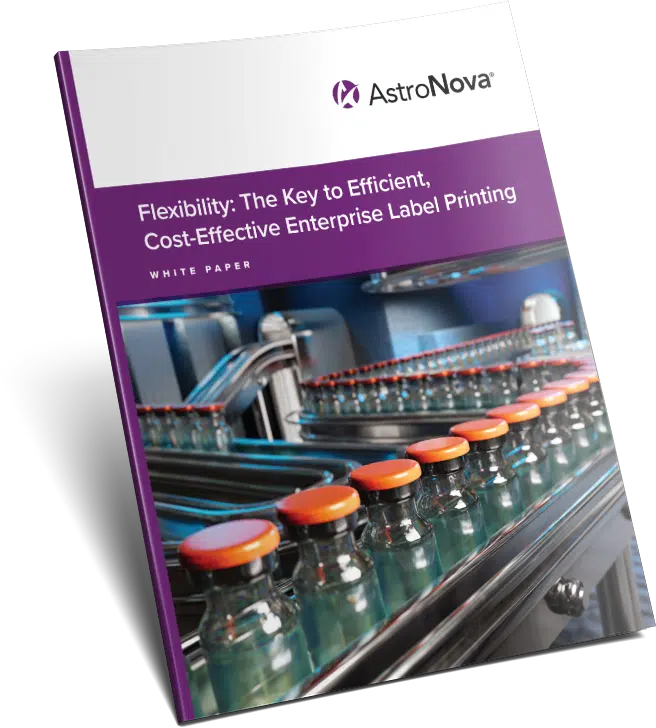
In-house label printing is transforming how companies manage their labeling operations. It improves business speed, quality, and operational control, especially across key industries from food production to manufacturing and logistics.
Yet for some managers, hesitation remains. Concerns often stem from perceived costs, operational complexity, or doubts about print quality and production impact. Sometimes, the cause is simply the comfort of “it’s how we’ve always done it.”
But in today’s fast-moving business environment, these objections are frankly outdated and costly, myths. As labeling requirements become more complex and time-sensitive, in-house printing offers clear responsiveness, flexibility, and control advantages.
Let’s break down the most common objections and examine how modern in-house label printing addresses each one.
Myth: “It’s too expensive.”
Upfront costs are often the first concern. At first glance, investing in printers, materials, and software may seem like a significant capital expense. However, a broader view shows that outsourcing is not cost-free, especially considering long lead times, inventory waste, minimum order quantities, and change fees.
Outsourcing frequently leads to overprinting and overstocking for operations managing multiple SKUs, seasonal products, or private-label items. In-house printing enables teams to print exact quantities on demand. This approach dramatically reduces waste, avoids obsolete inventory, eliminates excess stock, and lowers storage costs.
Untrue: “It’s too complicated to manage.”
In the past, label printing required technical expertise and regular maintenance. Today’s digital systems are far more intuitive. They are designed to support flexible workflows and empower a broader range of users.
Modern tabletop and mid-volume printers offer touchscreen interfaces, preloaded templates, and plug-and-play compatibility with popular design software. With proper onboarding and support from experienced manufacturers, teams can gain confidence and control without added complexity.
Unfounded: “We’re worried about print quality.”
Print quality is critical, particularly for food, beverage, and cosmetic brands that rely heavily on packaging appearance. Fortunately, today’s digital inkjet technology delivers resolution, consistency, and color accuracy that meet or exceed outsourced print standards.
In-house printing also enables real-time alignment with brand guidelines and faster quality checks. This is crucial. According to the U.S. Department of Agriculture, mislabeling remains one of the leading causes of product recalls. Managing labeling in-house can strengthen quality assurance and reduce downstream risk.
Fallacy: “Won’t this slow down our production?”
There’s a common fear that in-house printing will become a production bottleneck. In practice, it often streamlines operations. On-demand printing eliminates delays from label shipments or reordering.
Labeling can be integrated directly into the production line or used in a hybrid setup combining preprinted templates with variable-data overlays. This approach improves flexibility, allowing teams to respond to demand changes, labeling updates, or SKU shifts without derailing timelines or throughput.
Misconception: “Outsourcing is easier. We don’t need more responsibility.”
Outsourcing may seem easier in the short term, but often shifts challenges instead of resolving them. Errors, delays, or miscommunications with external vendors can cause disruptions, outdated packaging, or recalls.
By contrast, in-house printing puts control with the team that knows the product best. With the correct setup, training, and materials, teams can meet labeling needs with greater agility, speed, and precision.
Delusion: “If it ain’t broke, don’t fix it.”
Relying on outsourcing and traditional label inventory systems may feel safe, but can create hidden inefficiencies. Preprinted labels require storage, tracking, and version control. A single product or regulatory change can render entire batches obsolete.
In-house digital printing supports just-in-time production, digital file management, and simplified versioning. The result: reduced waste, lower costs, increased accuracy, and improved compliance across all SKUs.
The Real Deal
Objections to in-house label printing often stem from valid concerns such as cost, complexity, or unfamiliarity. But today’s digital in-house printing technologies, combined with rising demands for speed, customization, and compliance, have shifted the equation.
Understanding these concerns and how modern in-house label printing solutions address them helps businesses make smarter, long-term labeling decisions. In many cases, in-house label printing is not just a viable alternative to outsourcing. It invests in a more innovative, flexible, efficient, and sustainable path forward.




